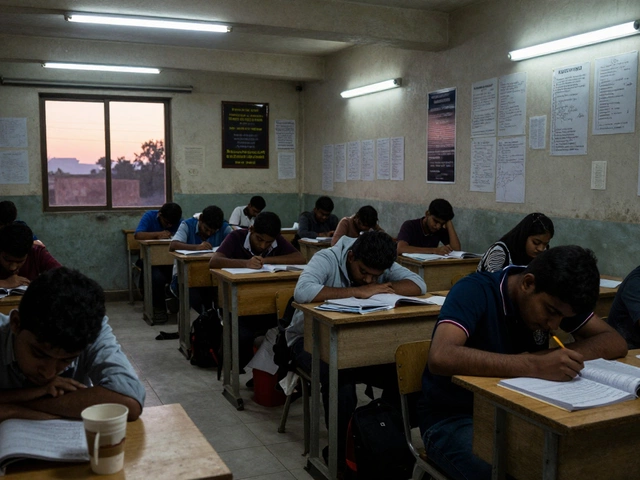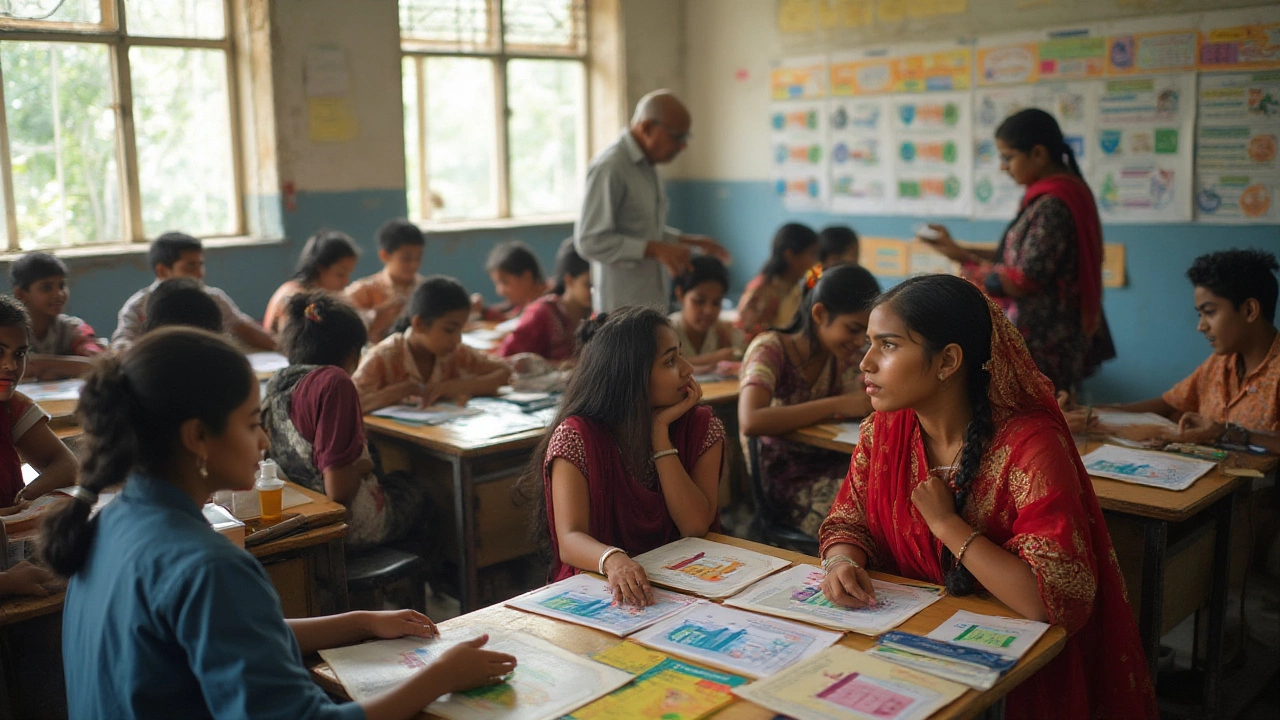Picture this: over a million students gear up every year, all eyes on a handful of seats in India’s most wanted engineering playgrounds—the Indian Institutes of Technology. That’s right, getting into IIT isn’t just about being a smart cookie. It’s a numbers game, a dazzling circus where the rank you score in the JEE Advanced decides your fate. But here’s the kicker—‘rank required for IIT’ isn’t one-size-fits-all. It twists and turns depending on which IIT you fancy, the branch you dream about, and where you’re from. So, how tough is it, really, to make the cut?
How IIT Ranks Work: The Basics, the Myths, and the Competition
First off, forget the idea that there’s a single ‘magic rank’ for IIT. The system is layered. You crack JEE Main first—only the top 2.5 lakh-ish scorers out of 1.5 million aspirants get to tackle JEE Advanced. And even then, the mad rush dog-piles onto just under 17,000 seats (2024 data) across all IITs. There are newer IITs and the OGs like Mumbai, Delhi, Kanpur, Madras, and Kharagpur, each with its magnetic charm and wild cutoffs.
Now, one thing I tell every IIT hopeful—and what I keep hearing from friends in Delhi and Mumbai (even here in Auckland, some families go through this every year!)—is that the IIT rank couldn’t matter more. A single-digit rank? You’re set for Computer Science anywhere. Beyond that, things get dicey. It’s not just your All India Rank (AIR) at play here. Reservation categories (General, EWS, OBC, SC/ST), gender, home state quota for certain IITs, and even supernumerary girls’ quotas for some branches can bump your chances up… or down.
Competition is bonkers. In 2024, around 1.91 lakh candidates appeared for JEE Advanced. Only 48,248 qualified. Just 17,740 seats for BTech programs open up—a mere 9% of actual JEE Main takers even get a shot at writing JEE Advanced, and just over 1% finally get in. For top branches at legacy IITs, maybe just the top 300-400 AIRs have it easy. For less-hyped branches and newer IITs, students with ranks around 9,000-15,000 sneak in. So forget blanket advice—branch, IIT, and category matter like crazy.

Actual IIT Cutoff Ranks: Data Table and Deep Dives
Forget vague ‘good rank’ talk. Let’s go straight to the source: last year’s closing ranks. Here’s a quick stat-up (numbers from JoSAA 2024 counseling):
| IIT | Branch | GC Closing Rank | OBC-NCL Closing Rank | SC Closing Rank | ST Closing Rank |
|---|---|---|---|---|---|
| Bombay | Computer Science | 67 | 320 | 103 | 51 |
| Delhi | Computer Science | 109 | 483 | 198 | 65 |
| Kanpur | Mechanical Engineering | 2430 | 1241 | 677 | 279 |
| Kharagpur | Electrical Engg. | 1543 | 668 | 483 | 185 |
| Roorkee | Civil Engineering | 5104 | 2334 | 1255 | 602 |
| Hyderabad | Electronics & Comm. | 985 | 463 | 303 | 142 |
| Indore | Computer Science | 1424 | 559 | 284 | 108 |
| Patna | Chemical Engineering | 12094 | 4461 | 1860 | 752 |
| Dharwad | Mechanical Engineering | 14421 | 5971 | 2803 | 1488 |
GC = General Category
OBC-NCL = Other Backward Classes (Non-Creamy Layer)
SC = Scheduled Castes
ST = Scheduled Tribes
Let’s break it down: To stand a shot at Computer Science in IIT Bombay, you’d better be in the first ~70 All India ranks (AIR, General). For Delhi, up to about 110. Move to Mechanical at Kharagpur or Kanpur, and you could sneak in with an AIR somewhere in the 2,000s. At new IITs like Patna or Dharwad, you might grab a seat with a rank as high as 12,000 or even 14,000 for some branches.
Now let’s say you’re OBC-NCL. At IIT Bombay CSE, the closing rank is 320. For SCs, you could get in at 103 (which is actually quite high relative to the overall competition). For STs at Bombay, the 51st rank is enough. This means reservation impacts cutoffs in a big way, especially outside the ultra-competitive branches.
If you’re planning the super-specific way most students do, pay attention to small quirks: gender-neutral versus female-only seats, special supernumerary spots for girls (seriously, some IITs go out of their way to improve gender balance), and even branch up-gradation as all this can nudge your luck.

Smart Moves: Maximizing Your IIT Chances (and What Not to Fall For)
Here’s the deal—the rank-requirement logic changes if you’re practical about branches and campuses. Most parents (myself included, if I were in their shoes) will push for CSE or ECE at old IITs, but these seats are brutally competitive. Be honest—are you aiming for branch, IIT, or just the tag? That choice matters more than you realize.
Keen on IIT, no matter the branch? For most new IITs, branches like Metallurgy, Mining, or Civil can swing open doors at AIRs of 9,000-14,000 (General). Less hype, but you’re wearing the IIT badge. Keep in mind, branches can feel less popular now, but as industries shift, doors for core engineering also swing wide.
If you have a reserved seat (OBC, SC, ST, EWS), check stats every year. Ranks you need are often less steep, and a little strategic filling of choices during counseling can pay off. Girls aiming for IIT, especially in branches with supernumerary quotas, sometimes get cutoffs 1.5-2x higher than boys—huge.
- Use JoSAA’s official cutoff rank lists for the last three years to set your target. Trends matter—occasionally, a branch in a certain IIT will slide or jump by 500 ranks based on demand.
- Don’t believe myth-stories from ‘counseling brokers’ who offer paid predictions or promises. Only trust official JoSAA data.
- Consider campus life, faculty, internships, and placement records too. CSE is hot for placements, but top branches in old IITs still pull in big salaries (IIT Bombay’s average CSE package topped Rs 36 lakh in 2024, but Mechanical was still above Rs 18 lakh!).
- Keep an eye out for ‘upgradation’ post first round of counseling. Many students upgrade to their dream branch or IIT as folks drop out or move to international universities.
- Plan for alternative options—NITs, IIITs, BITS, and even top state universities. Sometimes you’ll get CSE at NIT Trichy with a JEE rank of 4,000, but only Electrical at IIT Roorkee. Ask yourself, what’s the bigger prize?
I know families in Auckland (and honestly, all over the world) who fly back to India for that big exam weekend. Getting into IIT isn’t just about being a topper. It’s about knowing the exact cutoff targets, keeping your counseling strategy sharp, and not betting everything on hype. Stay up-to-date—cutoffs move yearly. Make your choices based on real data, honest reflection on what you want, and a willingness to flex if needed.





